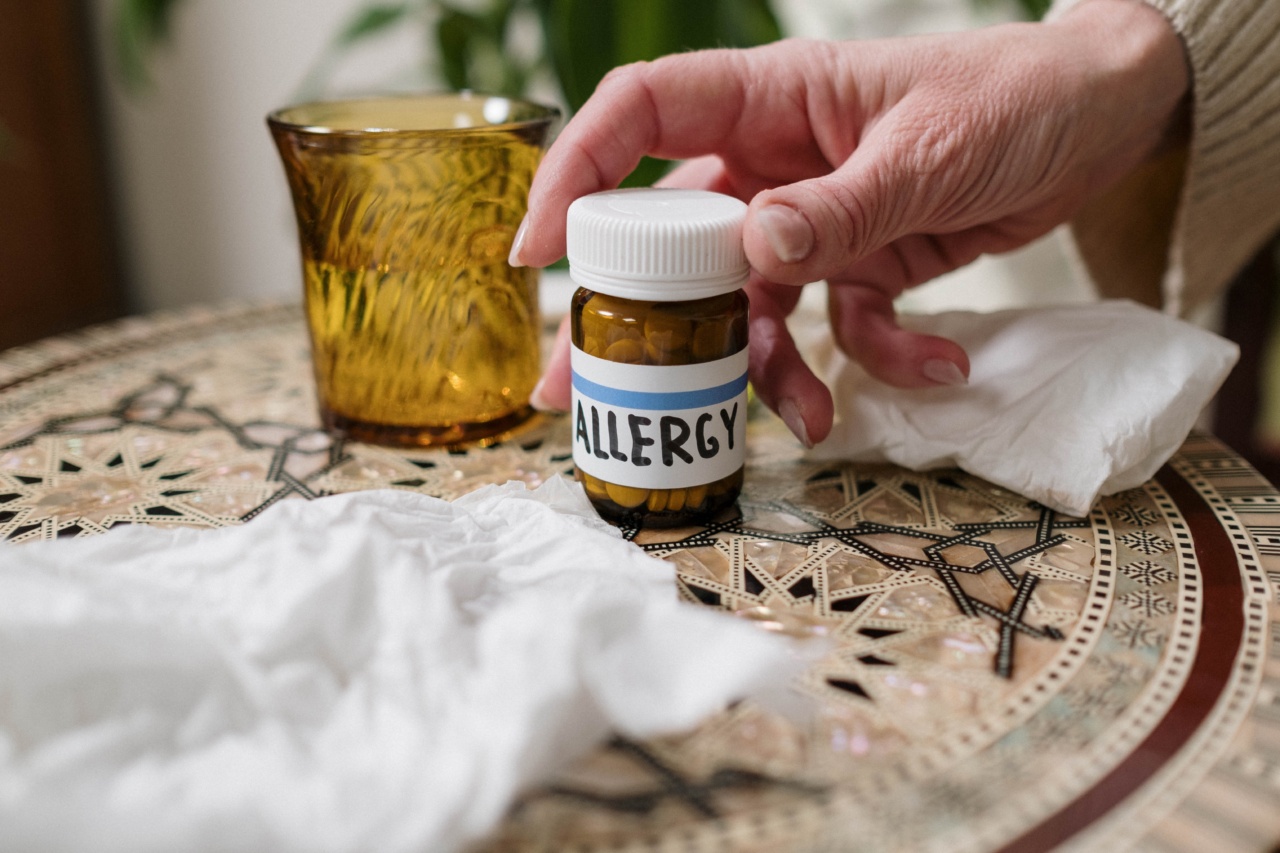Dust allergies affect countless individuals worldwide, causing symptoms such as sneezing, itching, and nasal congestion. For those afflicted, finding relief can be a constant struggle.
However, there is hope on the horizon as experts suggest that a cure for dust allergies may soon become a reality.
The Prevalence of Dust Allergies
Dust allergies are incredibly common, affecting approximately 20 million adults in the United States alone. This type of allergy occurs when the immune system mistakenly identifies dust particles as harmful substances and triggers an allergic reaction.
The reaction leads to the release of chemicals such as histamine, causing the various symptoms associated with dust allergies.
Current Treatment Options
Currently, individuals suffering from dust allergies must rely on various treatment options to manage their symptoms. These treatments include:.
1. Antihistamines
Antihistamines are commonly used to alleviate the symptoms of dust allergies. They work by blocking the effects of histamine, the chemical responsible for the allergic response.
While they can provide temporary relief, antihistamines do not address the underlying cause of dust allergies.
2. Decongestants
Decongestants are often recommended for individuals experiencing nasal congestion due to dust allergies. These medications work by constricting blood vessels in the nasal passages, reducing inflammation and alleviating congestion.
Like antihistamines, decongestants only offer temporary relief.
3. Immunotherapy
Immunotherapy, commonly known as allergy shots, is a long-term treatment option for dust allergies. This treatment involves receiving regular injections of allergens, including dust mites, to gradually desensitize the immune system.
While effective for some individuals, immunotherapy can be time-consuming, costly, and may require several years of treatment.
The Promise of a Dust Allergy Cure
Experts in the field of allergy research suggest that a cure for dust allergies may be on the horizon. Several exciting developments have been made in recent years, bringing hope to those suffering from the condition.
1. Oral Immunotherapy
Oral immunotherapy, or OIT, involves ingesting small amounts of an allergen to build tolerance over time. This approach has shown promising results in the treatment of food allergies and is now being explored as a potential treatment for dust allergies.
By gradually exposing individuals to dust mite allergens in a controlled manner, their immune systems may become less reactive to these substances.
2. Allergen-specific Immunotherapy
Allergen-specific immunotherapy (AIT) is a personalized approach to treating dust allergies. It involves identifying the specific allergens that trigger an individual’s allergic response and creating a vaccine tailored to their needs.
This targeted approach has shown promise in reducing symptoms and improving immune tolerance.
3. Gene Therapy
Gene therapy, a cutting-edge field in medical research, holds potential for the treatment of various diseases, including allergies. Scientists are exploring the use of gene therapy to modify the immune response to dust allergens.
By altering specific genes related to allergic reactions, researchers aim to create long-lasting relief for individuals with dust allergies.
4. Novel Therapeutic Approaches
Researchers are continually exploring novel therapeutic approaches to tackle dust allergies.
These include the use of monoclonal antibodies to target specific immune cells involved in allergic reactions and the development of vaccines that offer long-term protection against dust mite allergens. While still in the experimental stages, these emerging treatments show promise in providing lasting relief from dust allergies.
The Road to Approval
While the aforementioned potential treatments for dust allergies offer hope, it is important to note that they are still undergoing rigorous testing and clinical trials.
The road to approval and widespread availability is lengthy, requiring comprehensive research and safety evaluations.
Additionally, each individual’s response to these potential treatments can vary, and there may be potential side effects and contraindications that need to be thoroughly understood before they can be recommended as standard treatments.
In the Meantime: Dust Allergy Management
While a cure for dust allergies is in the pipeline, individuals currently suffering from the condition must rely on effective management strategies to alleviate their symptoms. Here are some tips for managing dust allergies:.
1. Keep Your Home Clean
Frequent dusting, vacuuming, and cleaning of surfaces can help reduce dust levels in your home. Using a vacuum cleaner with a HEPA filter can effectively remove allergens from carpets and upholstery.
2. Use Allergen-Proof Covers
Invest in allergen-proof covers for your mattresses, pillows, and bedding to create a barrier between you and dust mite allergens. These covers are designed to be impermeable to allergens, reducing exposure while you sleep.
3. Wash Bedding Regularly
Washing your bedding, including sheets, pillowcases, and blankets, in hot water can help eliminate dust mites and their allergens. Aim to wash them at least once a week to maintain a clean sleeping environment.
4. Minimize Carpeting
Carpeting can harbor a significant amount of dust and allergens. Consider replacing carpets with hard flooring options such as tiles, hardwood, or laminate.
If removing carpets is not possible, make sure to vacuum them regularly with a HEPA-filtered vacuum cleaner.
5. Maintain Optimal Humidity
Dust mites thrive in humid environments. Using a dehumidifier to keep indoor humidity levels below 50% can discourage dust mite growth. Additionally, using air conditioners and proper ventilation can help reduce humidity in your home.
6. Consult an Allergist
If your dust allergies are severely impacting your quality of life, it is recommended to consult an allergist. They can provide a comprehensive evaluation of your condition, offer personalized advice, and guide you through potential treatment options.
Conclusion
While a cure for dust allergies may still be on the horizon, advancements in research and technology have brought us closer to effective treatments.
Oral immunotherapy, allergen-specific immunotherapy, gene therapy, and other emerging therapeutic approaches hold promise in providing long-term relief for individuals suffering from dust allergies.
Until these potential treatments are widely available, managing dust allergies through proactive measures such as regular cleaning, using allergen-proof covers, and minimizing exposure to dust mites can significantly improve symptoms and overall well-being. Consultation with an allergist can also provide valuable guidance in managing your condition.




























